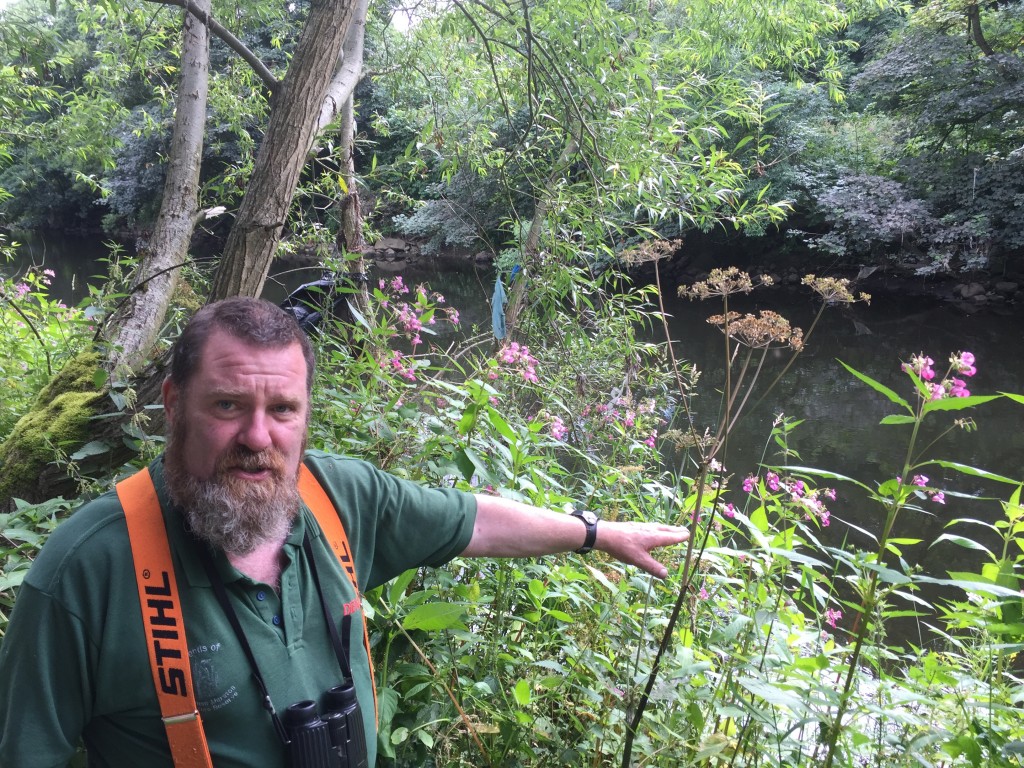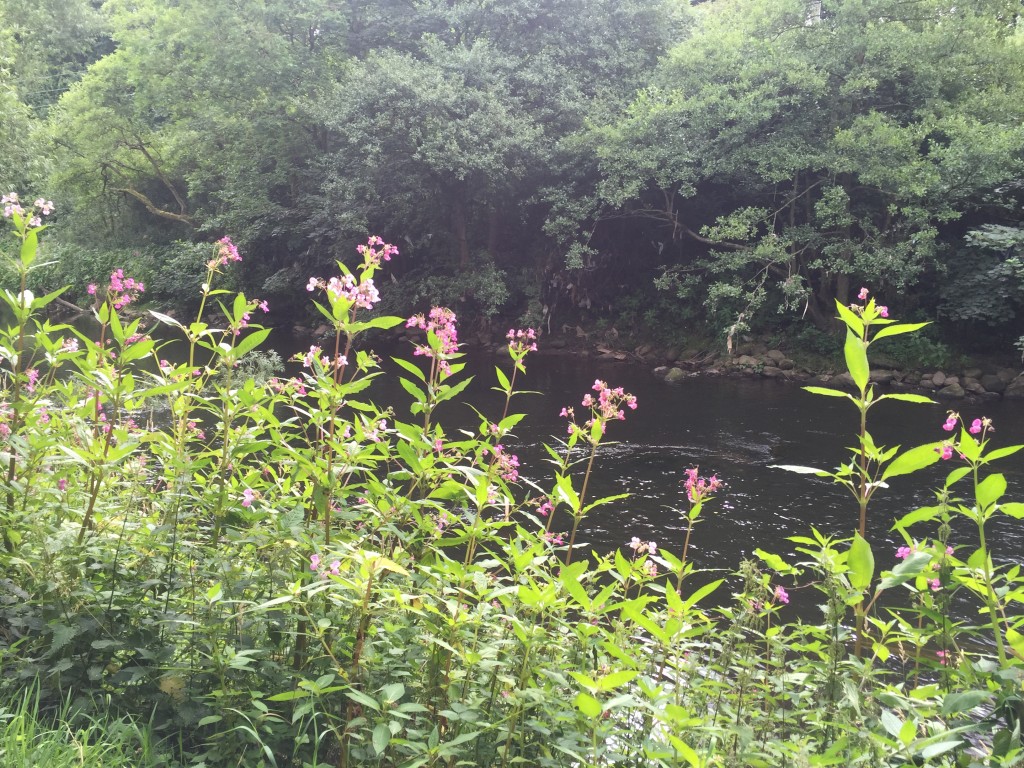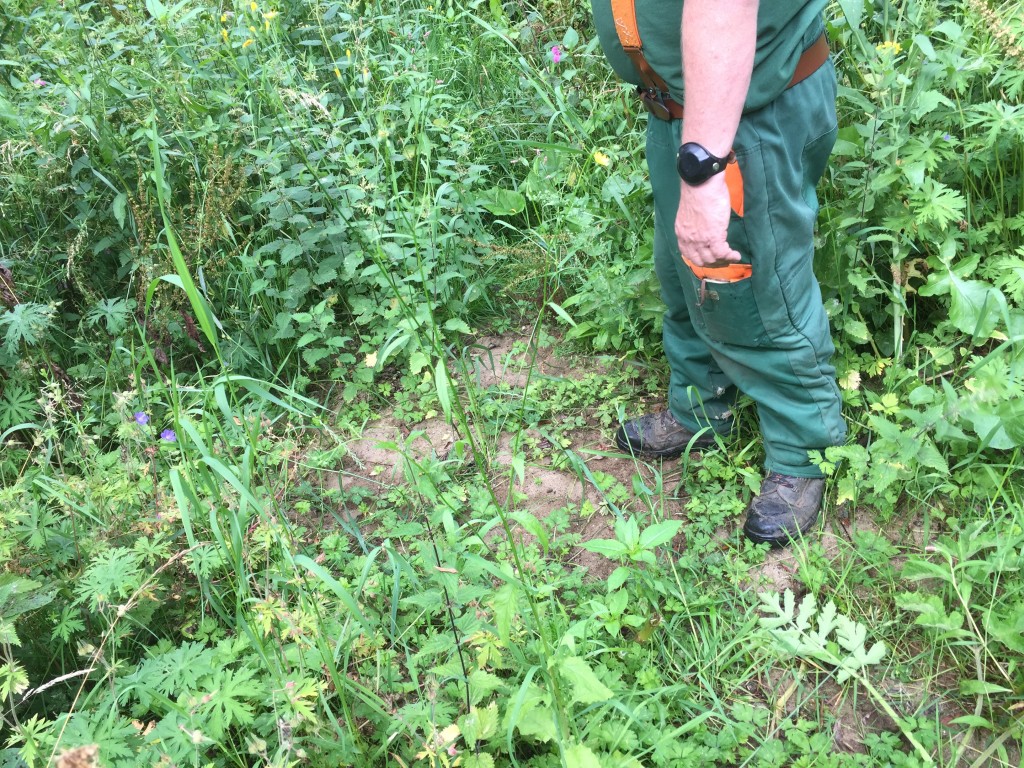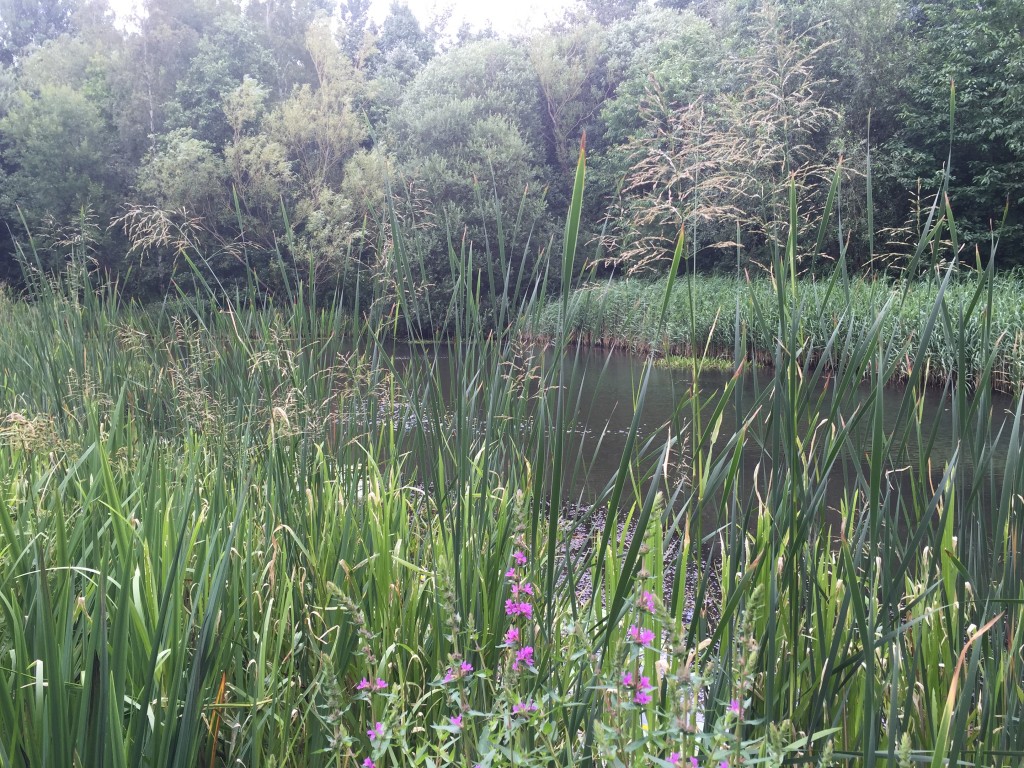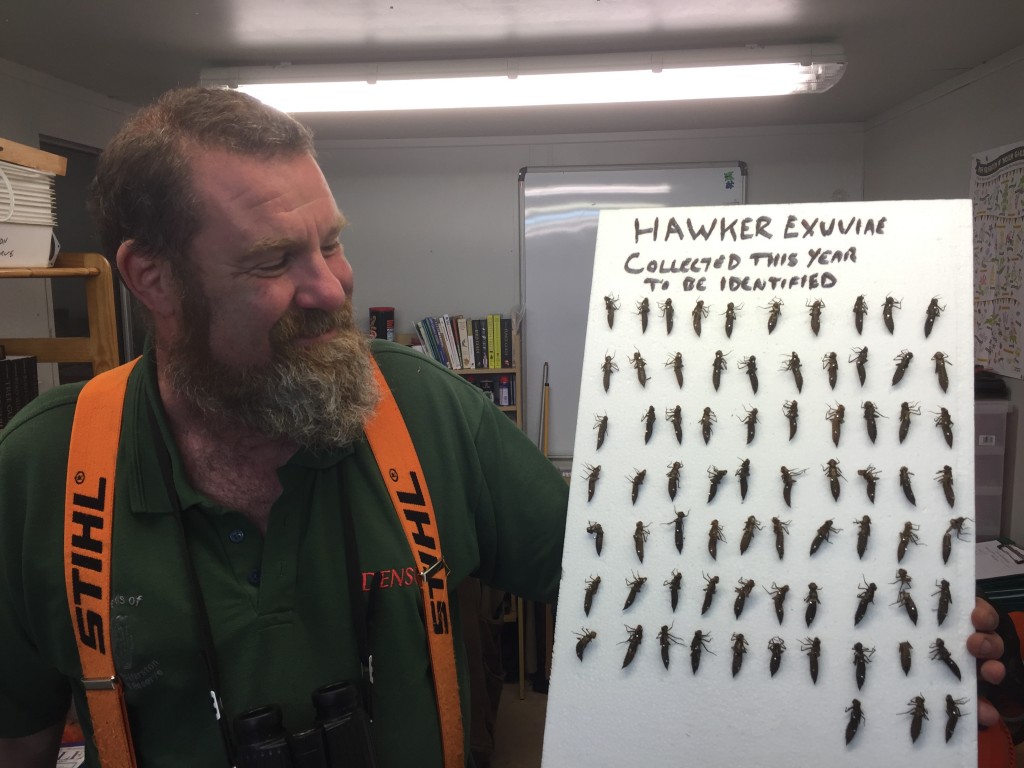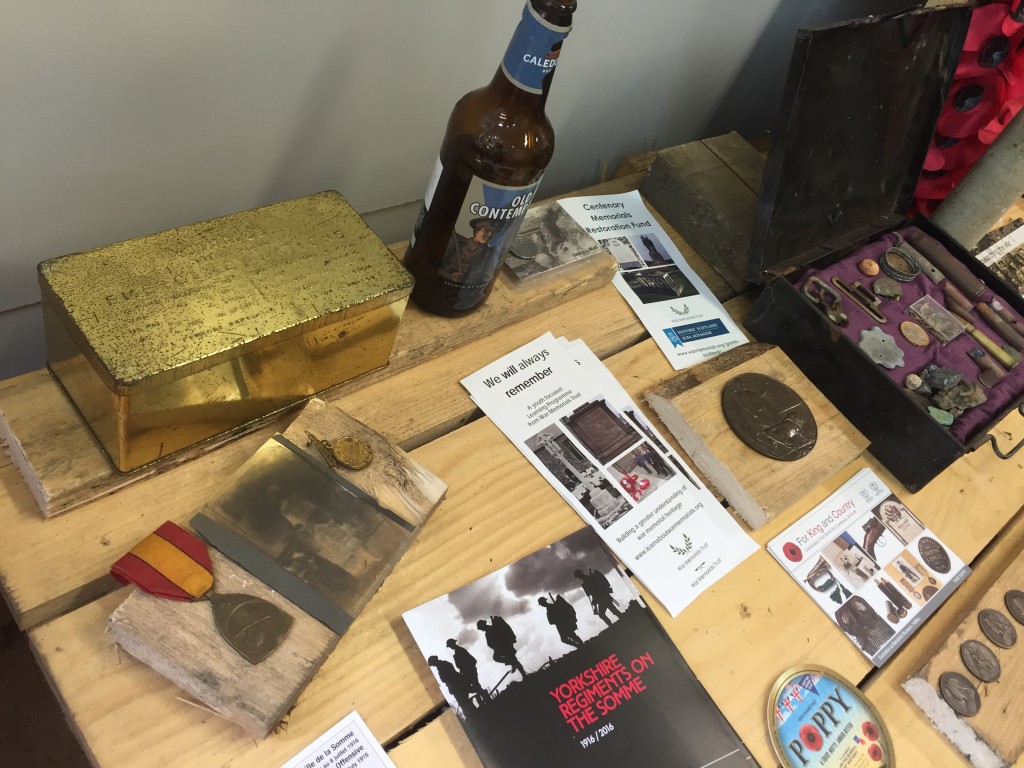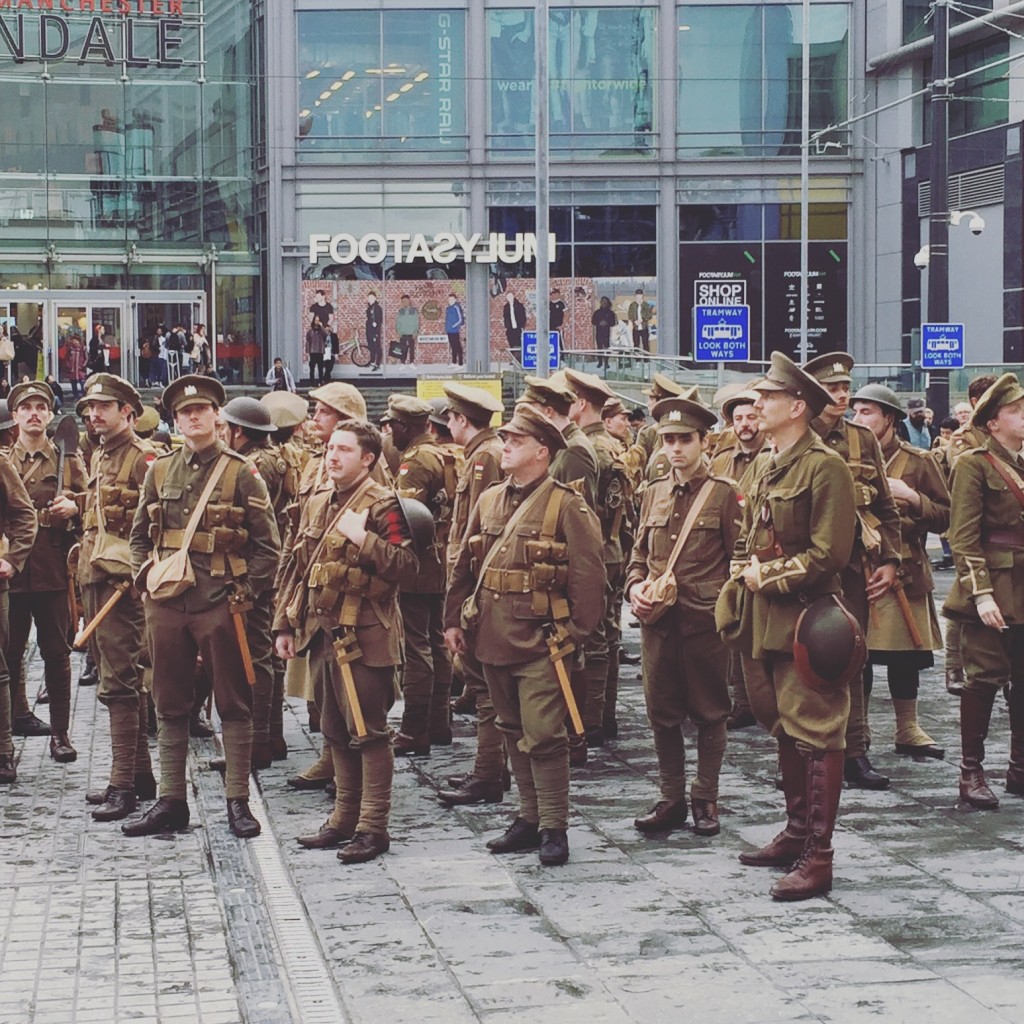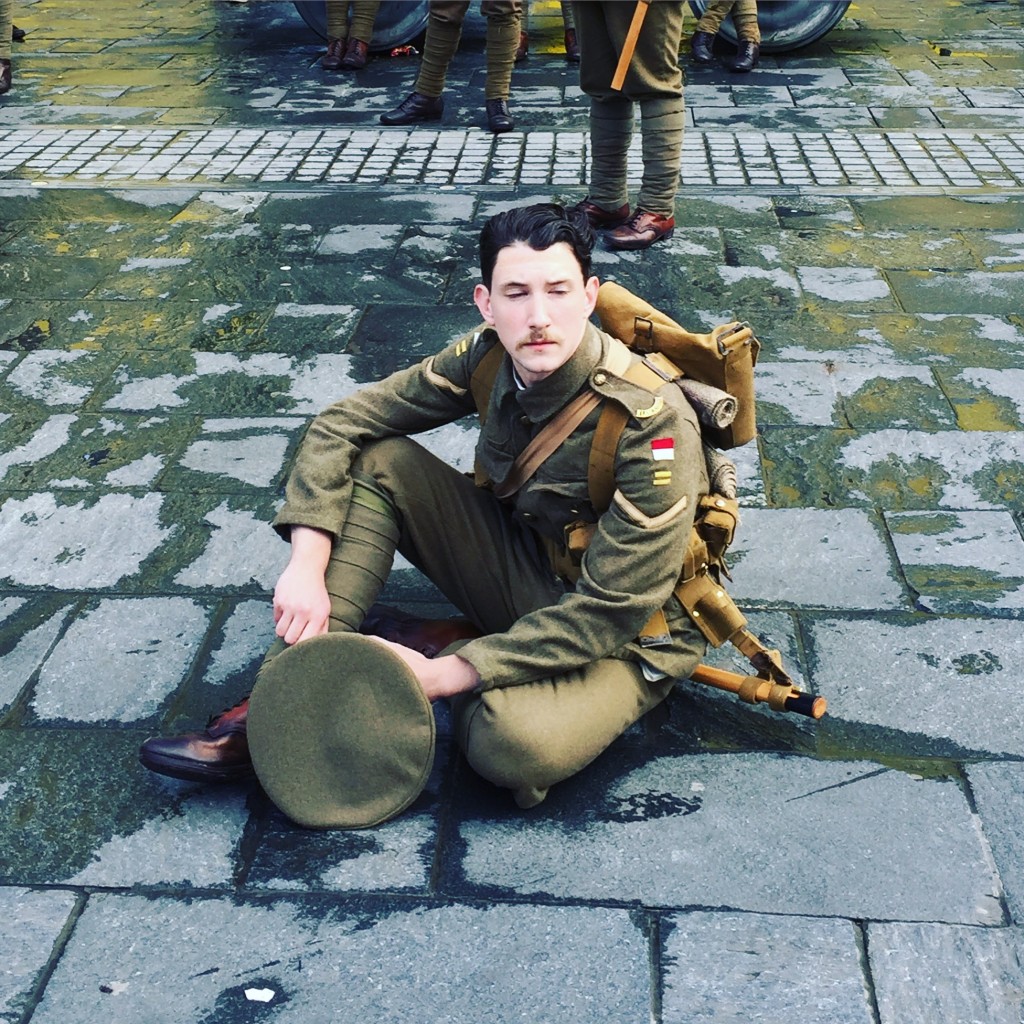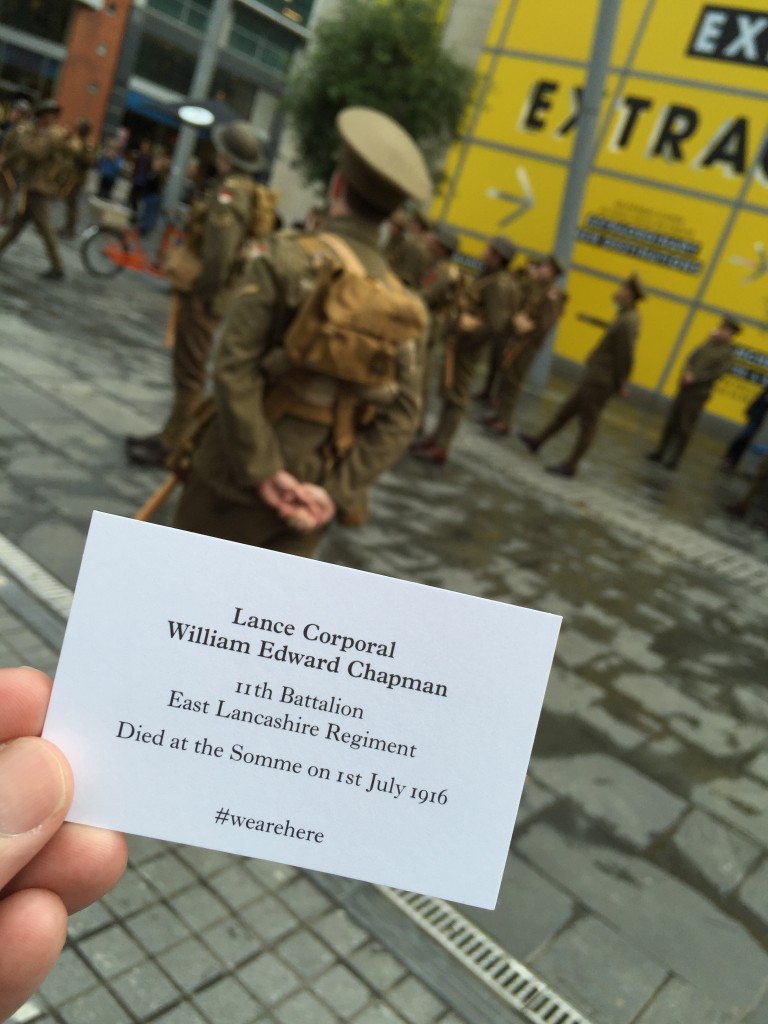This week I visited the Nature Reserve at Denso Marston’s, in Lower Baildon (Charlestown) to meet the warden there, Steve Warrillow. My visit was motivated by my research into how the Boxing Day floods have affected people and places in the Shipley/Baildon area. In my mental mapping, Denso’s is the most easterly point of interest on this stretch of the river — with Branksome Drive and Dowley Gap at the westernmost end. Steve, though, is a fascinating interviewee and we talked about many things besides the flooding…
Here he is down on the riverbank, pointing out to me the extent of what was lost to the river as a result of the flood. He estimates that, last year, there was eight to ten feet more banking between the river and the main footpath through the reserve — but as you can see, at this point there’s barely any gap at all. Given that much of the nature reserve is a fairly thin strip of land between the Aire and Denso’s working factory site, Steve can’t necessarily afford to lose whole chunks of it to the river… although of course he is the first to admit that it is the nature of rivers to alter their course over time.
So severe has the banking collapse been, Steve notes, that he has decided to leave a small forest of Himalayan balsam in its (self-seeded) place, to provide a kind of safety barrier along the sharply sloping banking next to the path. (The balsam is of course visible in the photo above — as is, on the opposite side of the river, some of the flood debris still hanging in trees some seven months later.) Balsam grows tall enough that it masks and deters, but it is also of course (as discussed in my last blog but one) an invasive species that wreaks havoc with native plants and soil integrity along riverbanks. Some would no doubt be appalled that Steve has allowed so much of it to remain in place — rather than trying to pull it all up before it can release more seeds downstream — but he adopts a more philosophical attitude, seeing balsam as just one issue among many he has to deal with, rather than in terms of the tabloid-style hysteria that it sometimes attracts.
Away from the river, evidence of the flood is also to be found underfoot. This, Steve points out, is river sand — left behind by the receding waters. It’s the kind of stuff that householders affected by the flood tried to get rid of straight away, not least because of the likely contaminants in it (e.g. raw sewage from up at the Dowley Gap sewage works). But of course, in a more natural setting like this one, anything organic can be left to rot down and provide nutrients for the earth. The big problems Steve had to deal with on the nature reserve, post-flood, was the huge quantity of inorganic debris that was swept downstream and left on site — everything from cars and freezers down to plastic bags and tampons. There were also quite a few dead animals, large and small … organic matter, yes, but not what you want left about to rot!
When you’re dealing with a sizeable patch of land like this, which was ten feet under water at the worst of the flooding, and has plenty of trees to act as barriers/obstacles to things being swept along, its unsurprising that so much was left behind. Fortunately, though, most of the debris was cleared away quite quickly by a major volunteer clean-up effort in January — when the Friends of Denso Marston’s customary volunteer force was joined by others from the area including the Friends of Roberts Park, Hirst Wood Regeneration Group, and Mat Holloway’s ADRI (Aire Debris Removal Initiative). Steve recalls the amazingly positive initial response to the Reserve’s calls for help — but also notes that this positive burst of energy tailed off quite quickly… He has been frustrated, in the months since, by the thoughtless remarks of visitors wondering why everything is not as perfect with the reserve as they would expect it to be… (We can all have very short memories.)
Looking at the site today, it would indeed be easy to forget about the recent flooding, given that Steve and his volunteers have done such a great job cleaning it up and restoring it to former glories. This photo of the reserve’s wetland pond — the heart of its wildlife habitats — looks positively idyllic, and belies the hard slog that has gone into managing its restoration in the months since the flood. Moreover, Steve notes, the banking all the way around the pond is perilously soft, just as it is along the river.
He has been cheered, though, by the signs of wildlife making a resurgence on the site even after so much of it was rudely displaced at Christmas. In the reserve’s education hut (a new one now located some way up the hill, at a safer distance from the river than the old one, which was wrecked by the flood), Steve proudly showed me this display of dragonfly chrysalises that he has collected from around the site this year. There had been fears that the dragonfly population would be badly affected by the flooding and its aftermath, so this little exhibition is evidence of very good news…
Even so, the reserve’s dragonfly population is also indicative of wider changes in the natural world that would be foolish to ignore. If the flooding, as many have argued, is symptomatic of a changing climate in this 21st century, so too is the fact that Steve regularly observes dragonfly species on this site that he would never have seen twenty years ago, when the reserve was establishing itself. The warming climate is pushing many species north in search of more temperate climes. (Although the chrysalises preserved in this display appear to be from species that are more “natural” residents of Yorkshire.)
Also on display in the education hut is Steve’s personal collection of First World War memorabilia — set out to mark the hundredth anniversary of the Battle of the Somme at the beginning of this month. Aside from being a keen birder and insect expert, Steve is fascinated by story of the Somme — as well he might be, given that his great-grandfather was one of the lucky soldiers to survive the slaughter (had he not… no Steve). Among the treasures collected here are his great-grandfather’s first-aid box (the black tin to the right of this shot, now displaying bullet fragments etc), and a still-unopened tin of Tommy’s rations (the gold box to the left). It’s pretty weighty! Steve has heard tell of one such box being opened quite recently, and its contents still being perfectly intact (presumably because it was completely airtight). So strange what changes, and doesn’t, over time.
Steve’s interest in the war extends to having booked a package tour to the Somme, which he is heading off on in August. It’ll be his second visit. We spoke quite a bit about all this, as well as about the reserve and the flood, and I mentioned that — on July 1st, the centenary of the Battle — I had been fortunate enough to witness the eerie presence of World War I soldiers on the streets of Manchester… I promised to post some pictures on this blog, so Steve could see them…
This was Exchange Square, towards the end of the day, as all the “soldiers” who had been positioned in different parts of the city, ever since the morning rush hour, gathered together for the event’s understated conclusion…The appearance of silent soldier figures in cities up and down the country that day was part of a commemmorative art event conceived by the artist Jeremy Deller (who in 2001 famously staged a reconstruction of the 1984 police vs. miners clash at the “Battle of Orgreave”). Titled simply “We Are Here” (after the song “We’re here, because we’re here…”; there wasn’t much more rationale for the trench warfare…), the piece consisted simply of perfectly attired actors standing — or sitting — as a silent presence within the everyday lives of commuters and shoppers. A little like the traditional “two minutes silence”, but played as an interruption in space rather than time.
Each soldier had a collection of “business cards” indicating the identity of the man he was representing (and thus, literally, re-membering). They didn’t offer them around, but if you went up to one of them to ask what was going on — or simply to ask who he was — then he would give you a card and simply walk away. Like a ghost.
It’s not just water that can sweep people away.
Thanks Steve, for a memorable visit.

